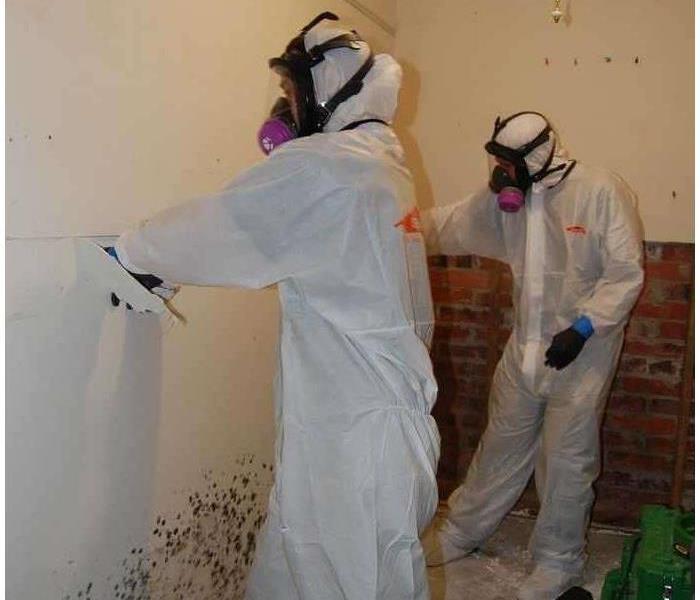Understanding Mold Remediation - Steps 4 through 7
2/4/2019 (Permalink)
Every mold damage scenario is different and requires a unique solution, but the general mold remediation process stays the same. The steps listed below illustrate the “typical” process:
Step 4: Air Filtration
Specialized filtration equipment allows professionals to capture microscopic mold spores out of the air. They utilize powerful “air scrubbers” and HEPA vacuums to prevent the spread of these mold spores while the mold remediation is in process.
Step 5: Removing Mold and Mold-Infested Materials
The mold remediation process depends on the amount of mold growth and the types of surfaces on which the mold appears. SERVPRO of Wichita Falls professionals use antifungal and antimicrobial treatments to eliminate mold colonies and to help prevent new colonies from forming. Removing and disposing of mold-infested porous materials, like drywall and carpeting, may be necessary to remediate heavy mold growth.
Step 6: Cleaning Contents and Belongings
SERVPRO of Wichita Falls professionals clean your furniture, decorative items, curtains, clothing, and other restorable items affected by mold. They use a variety of cleaning techniques to clean and sanitize your belongings. They’re also trained to remove odors and deodorization using fogging equipment.
Step 7: Restoration
Depending on the level of mold damage, drywall, subfloors, and other building materials may be removed. Restoration may involve minor repairs, such as replacing drywall, painting, and installing new carpet; or it may entail major repairs such as the reconstruction of various areas or rooms in a home or business.
If you have mold in your home or place of business, call SERVPRO of Wichita Falls today at 940-263-1550.






 24/7 Emergency Service
24/7 Emergency Service
